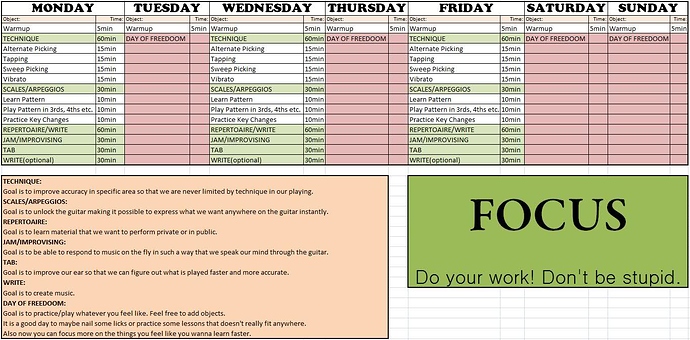Yes, if you want to break the principle down to its core, staying relaxed is what it is all about.
However, for me it took a little bit more detail until i got the idea. Whenever i read that you’re supposed to be realxed while playing, i totally skipped that part mentally, because i just thought “yeah, of course i am relaxed”. You dont realise the unnecessary tension in your playing because you experience it as the “normal” way to play. Just like you dont ask yourself if you apply too much tension while holding your coffee-mug, its just how you do it.
Difference is, if we use maybe 20% more muscle tension than necessary to keep the cup from falling out of our hands, nothing bad happens. However, while trying shred, those 20% absolutely get in the way since you have to overcome that tension everytime you want to move your fingers.
So in a way we are dealing with an invisible form of tension because you dont really experience it as such but you have to push through it all the time.
Tension is not the only obstacle for fast playing, mental factors like chunking and mechanical ones like pickslants are relevant, too. However, i think the reason why the ctc material basically presupposes stuff like clean runs on one string (and assumes everyone who applies chunking can manage those) is, that great players like troy just experience very low tension as the only intuitive way of doing this. No mechanical obstacles can come in the way there, just memorization and tension.
Problem: For me tension is intuitive when trying something “hard”. Everytime i really want to nail a lick, i tense up a bit. Thats apparently how i tick. So i really have to remind myself during practice that the only way to play that stuff well is to play it as relaxed as possible. I have in fact written that down on a paper with “advices” to myself which i always read through before i start. Because whenever i find a sweetspot and can play through a run with ease, that is always very relaxed. Paradoxically, a week later that level of relaxation seems contraintuitive to me and i have to force myself to apply much less power than i “want”. I guess my next breakthrough will happen when that feels natural all the time.
First and foremost, i needed such info to change my attitude about praciticing. The book i mentioned (Natural guitar principles is the correct title actually https://www.amazon.com/Natural-Classical-Guitar-Principles-Effortless/dp/1871082307) made me see that i do not have to “work out” to make something hard possible, but find an easy way and momorize that approach. If i didnt collect the right info i could have kept doing what i did for decades without seeing any progress, i am 100% sure of that. So thats why i recommend to set aside some time for research 
You are already playing at pretty shreddy speeds, so i guess you are intuitively more sensitive to such issues! ( i was cramping so much i couldnt play scales faster than 120 bpm). Great breakthroughs ahead 
Ok, thats all, sorry for the wall of text i have a tendency to drown people in wordsalad!




